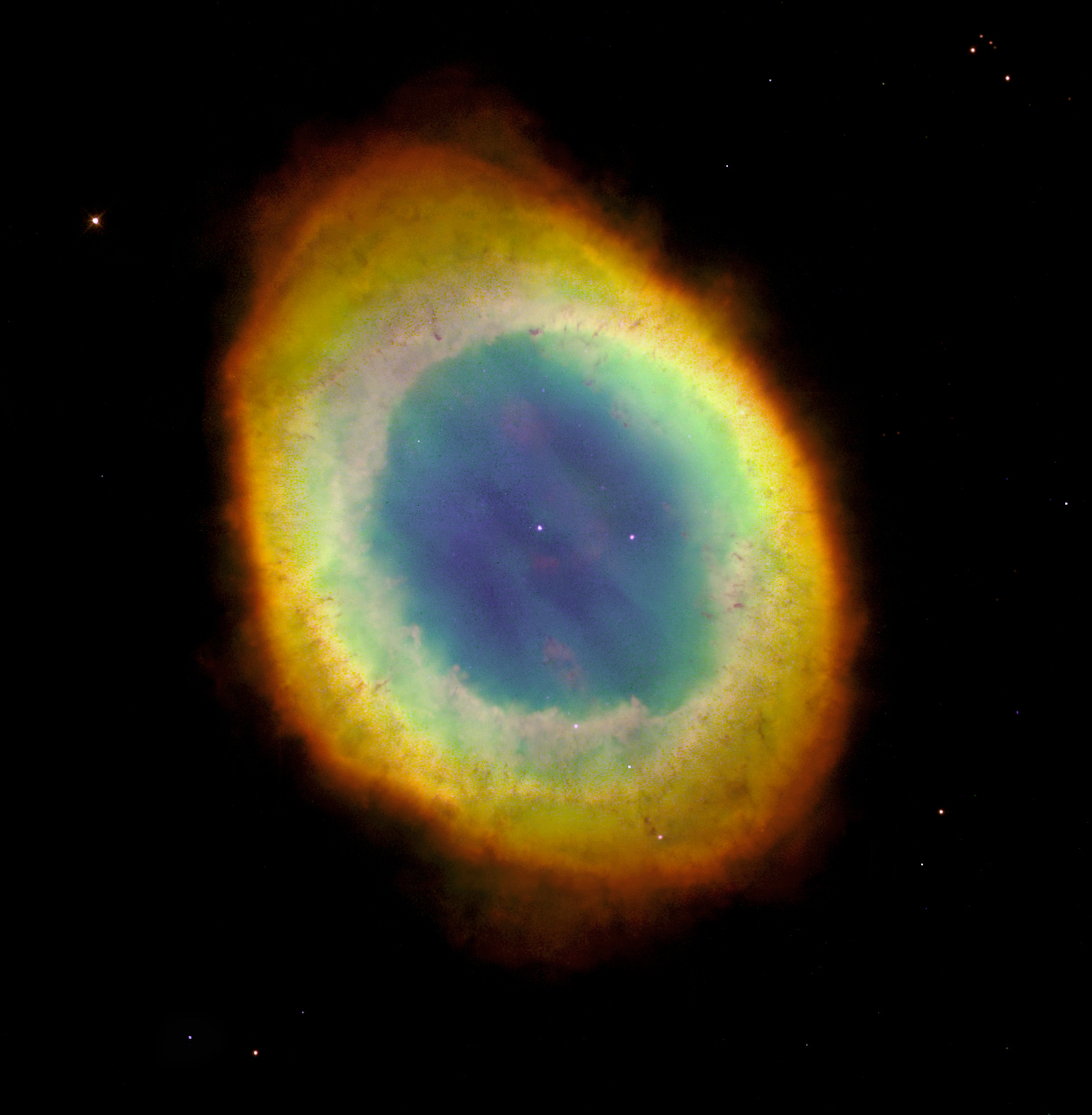 Caption: The Ring Nebula from
Hubble Space Telescope (HST)
in true color---though maybe a bit
enhanced???? compared to what one sees in a small
optical telescope.
Caption: The Ring Nebula from
Hubble Space Telescope (HST)
in true color---though maybe a bit
enhanced???? compared to what one sees in a small
optical telescope.
The Ring Nebula is the best known of all planetary nebulae.
The Ring Nebula is ∼ 0.7 kpc ≅ 2000 ly away in the constellation Lyra. The ring is ∼ 0.3 pc ≅ 1 ly in diameter. The green is due to green forbidden lines of O III (i.e., doubly ionized atomic oxygen). The blue is from helium and the red is from ionized nitrogen.
The Ring Nebula nucleus (i.e., its planetary nebula nucleus (PNN)) is in the transition phase from asymptotic giant branch (AGB) star to white dwarf. Currently, it has luminosity ∼ 200 L_☉, and so it is still far brighter than white dwarf luminosity which is typically of order 0.0 L_☉. However, it has mass ≅ 0.62 M_☉ which may NOT be too far from its final white dwarf mass which has mean value ∼ 0.6 M_☉ (Wikipedia: White dwarf: Composition and structure).
Credit/Permission:
NASA, 1998 /
Public domain.
Download site: NASA: Multimedia.
Image link: Itself.
Local file: local link: planetary_nebula_ring.html.
File: Post-main-sequence file:
planetary_nebula_ring.html.